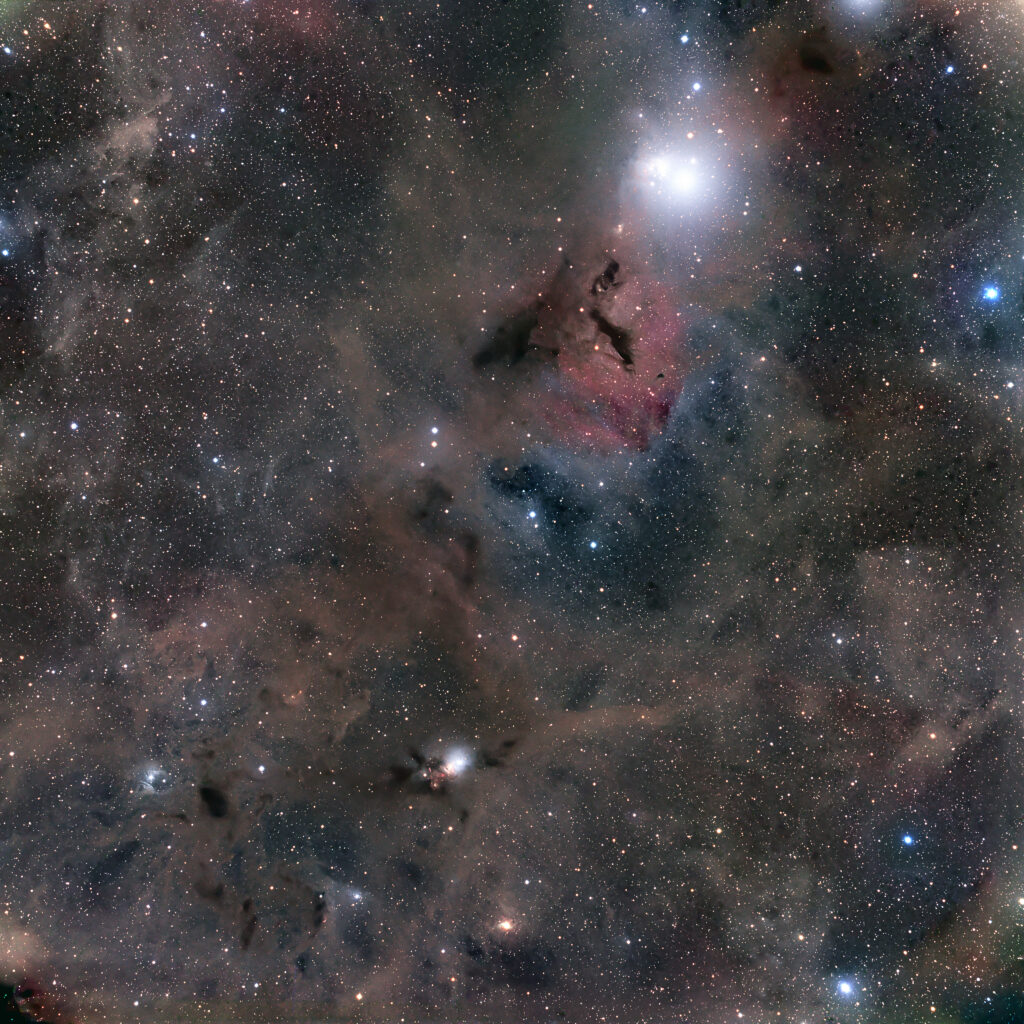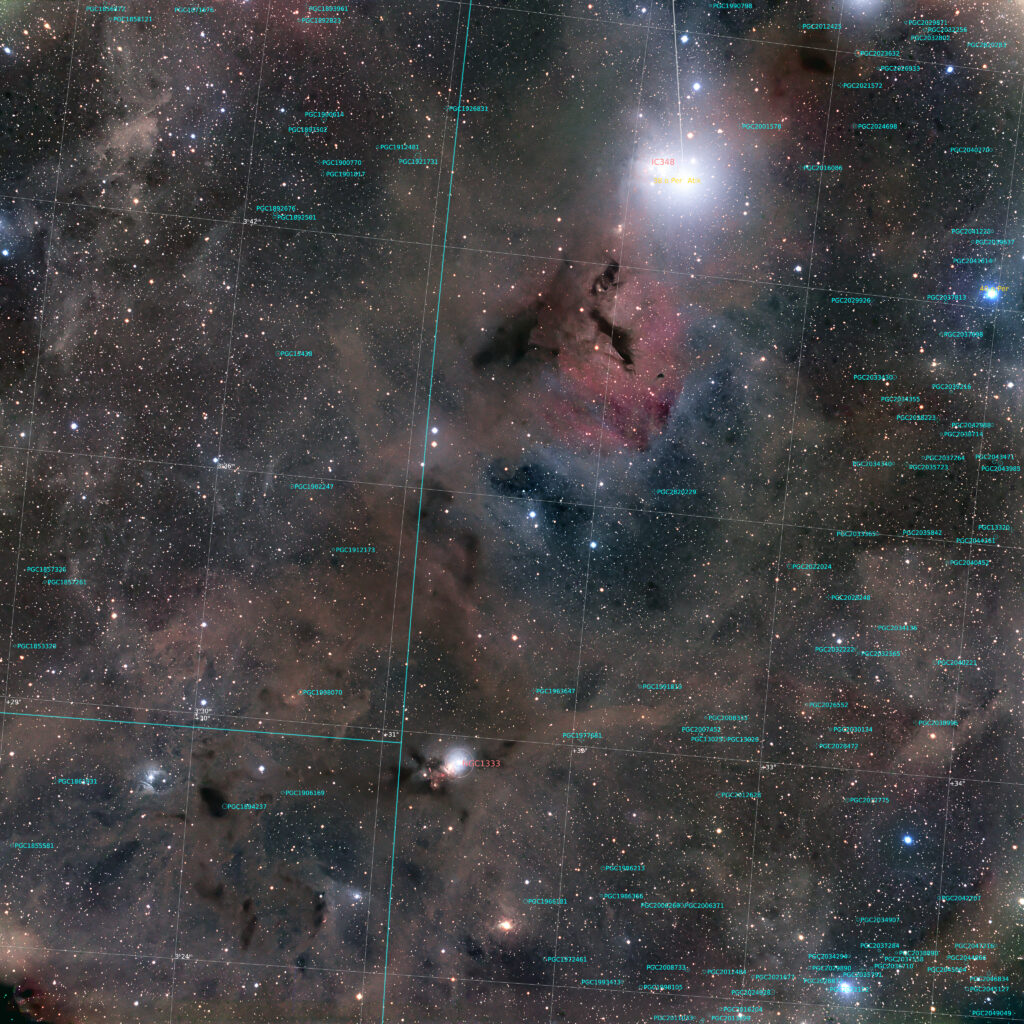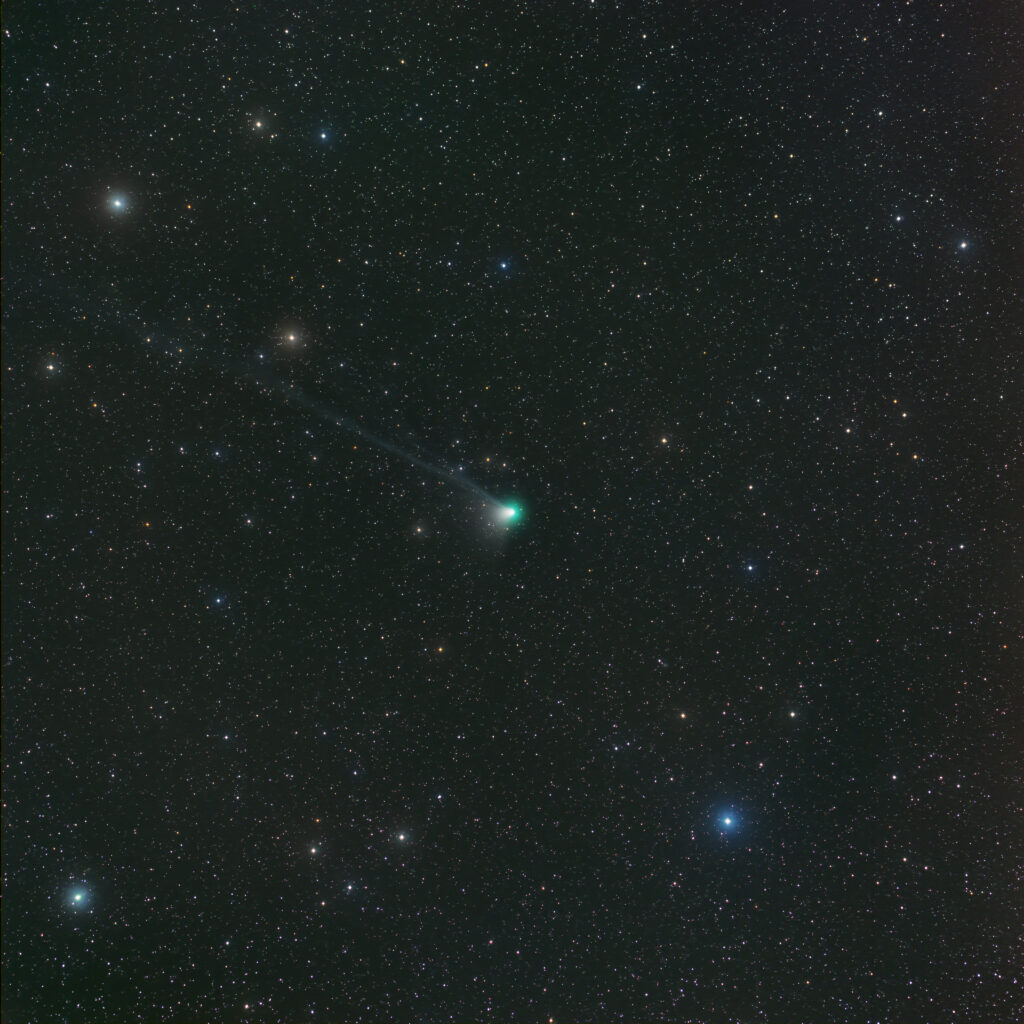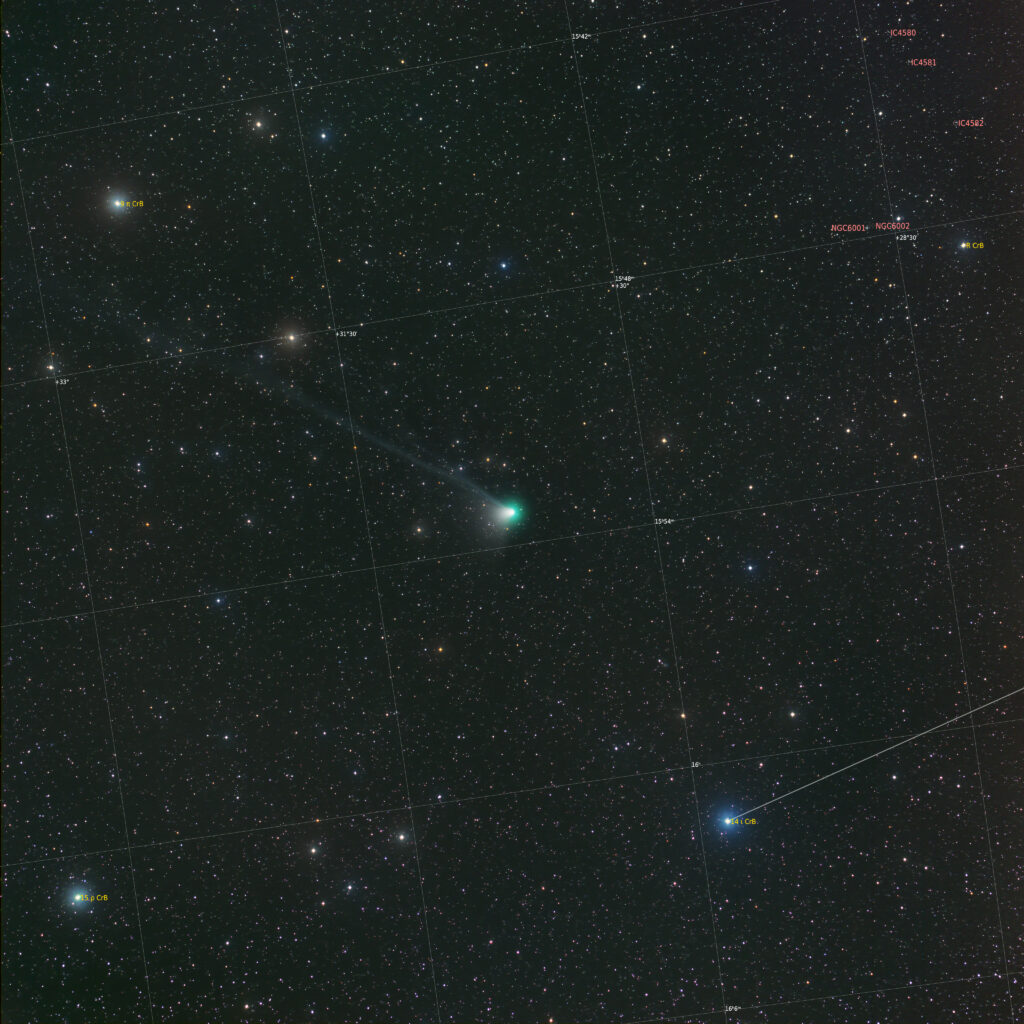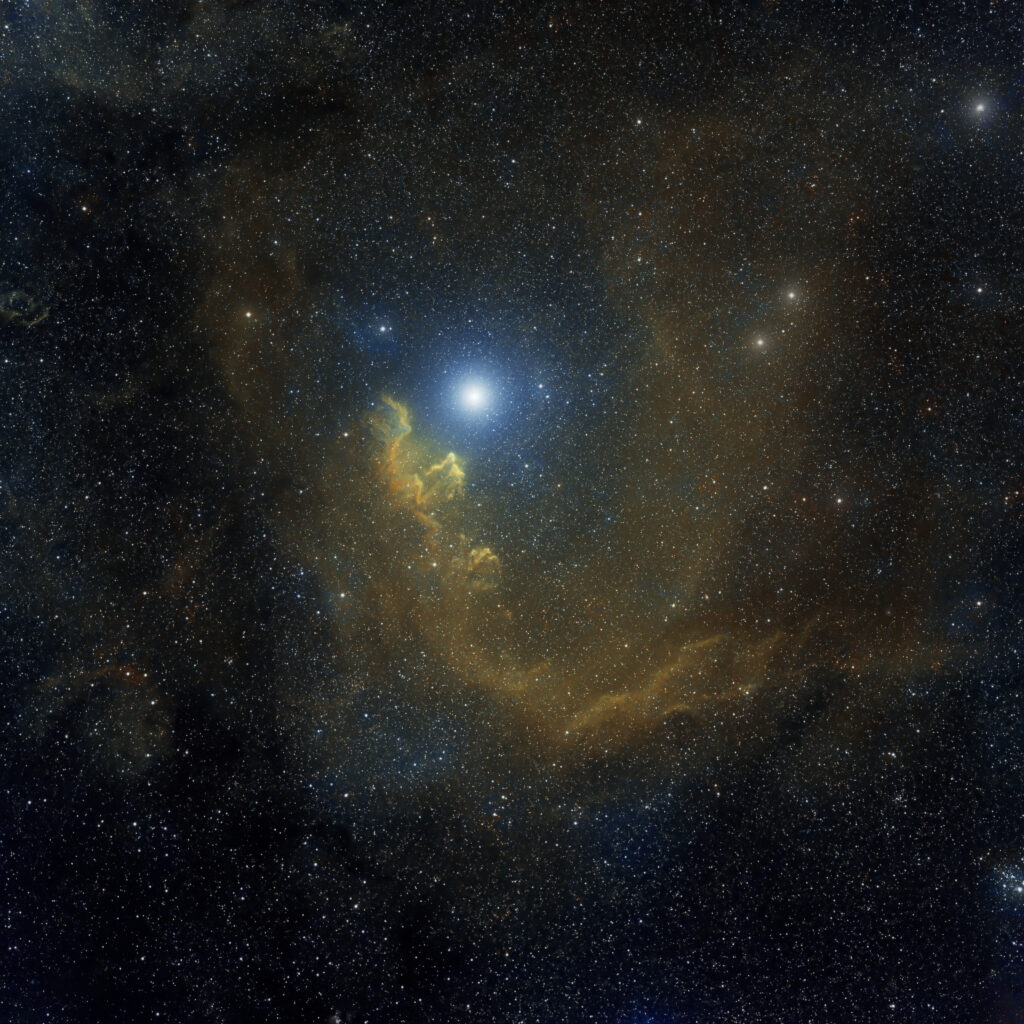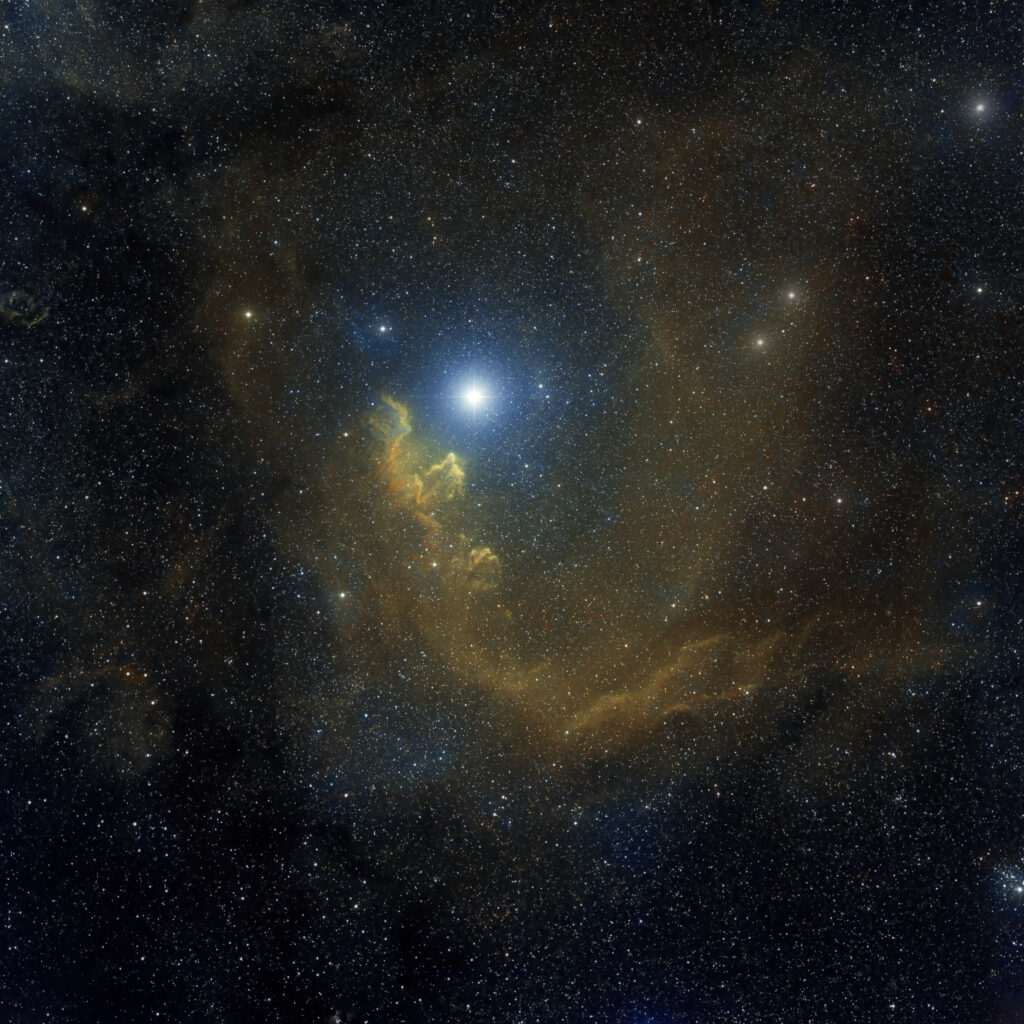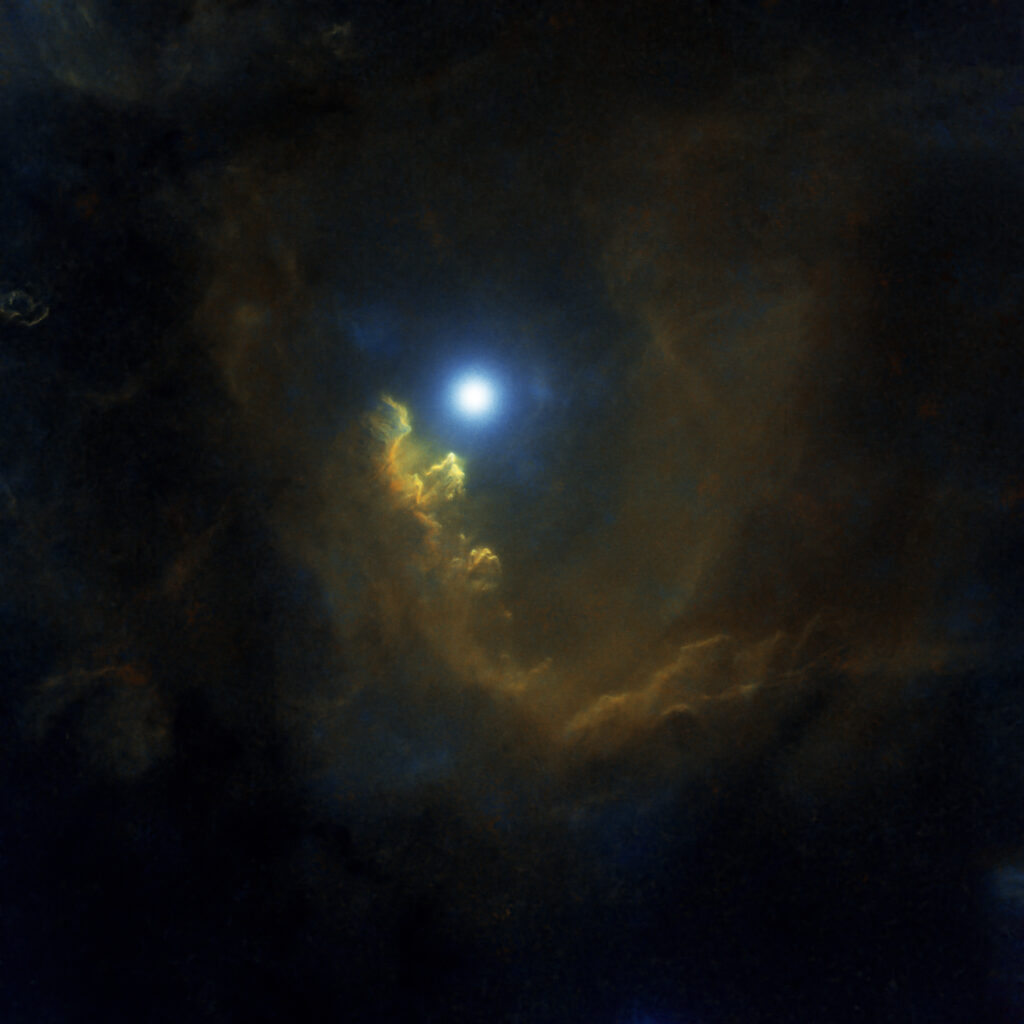M63 (NGC5055) Sunflower galaxy
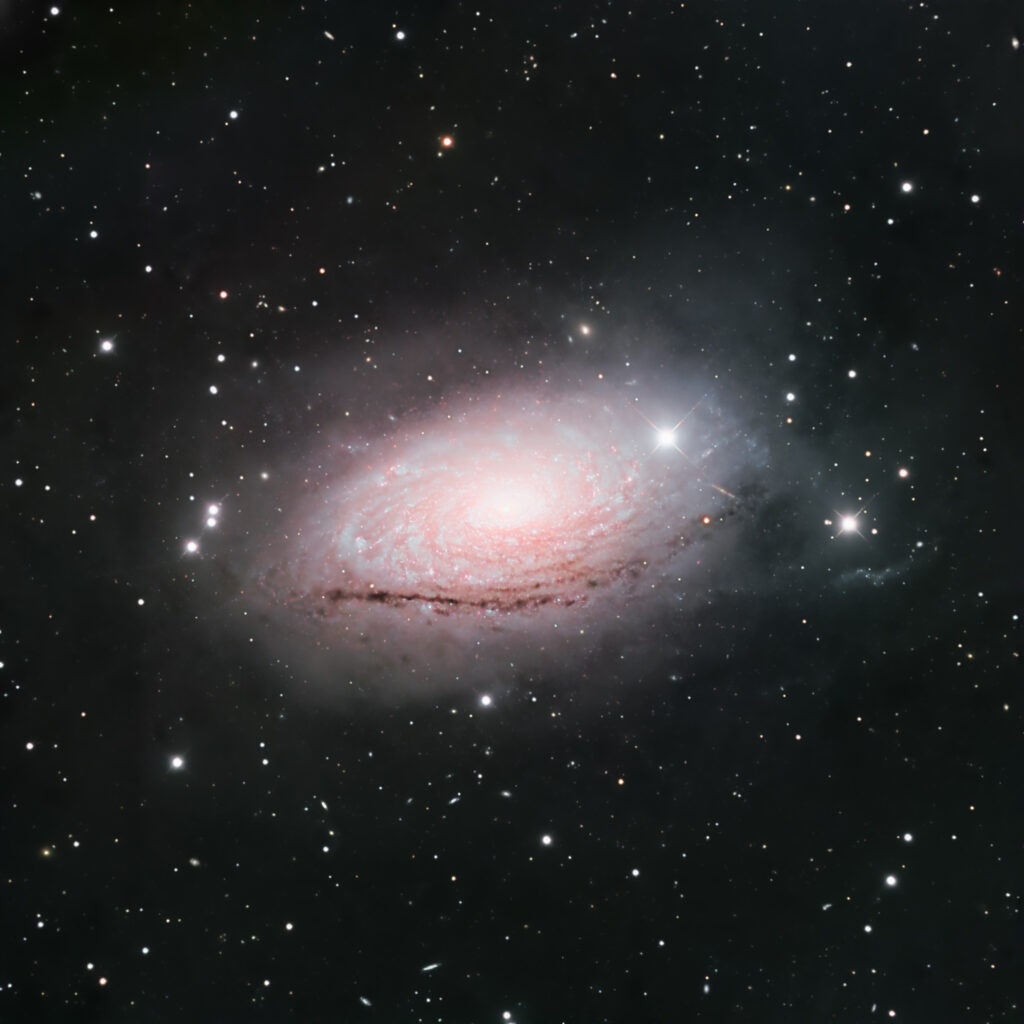
Spiral galaxy in the northern constellation of Canes Venatici belonging to M51 Group located to the southeast of the M101 Group and the NGC 5866 Group. The distances to these three groups are similar, thus the M51 Group, the M101 Group, and the NGC 5866 Group are actually considered as part of a large, loose, elongated structure; cfr.: https://arxiv.org/abs/astro-ph/9910501.
In the mid-19th century, Anglo-Irish astronomer Lord Rosse identified spiral structures within the galaxy, making this one of the first galaxies in which such structure was identified.
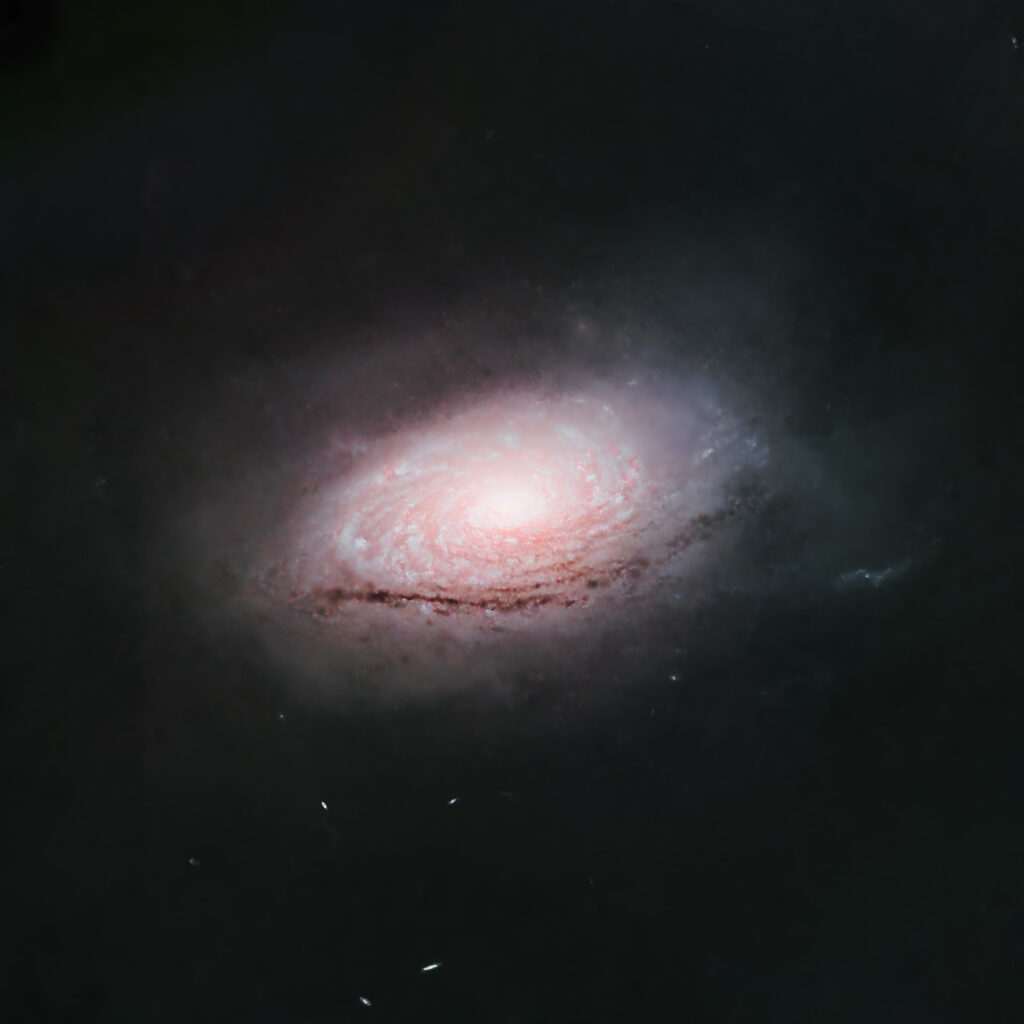
According to Ann, Ha et Al., 2015 [cfr.: https://arxiv.org/abs/1502.03545] catalogation of visual classified galaxies in local Universe the shape or morphology of this galaxy has a classification of SAbc where SA indicating a spiral form with no central bar feature, and bc describes a moderate to loosely wound arms, as evinced from a visible light observation with general lack of large-scale continuous spiral structure, thus M63 is considered a flocculent galaxy.
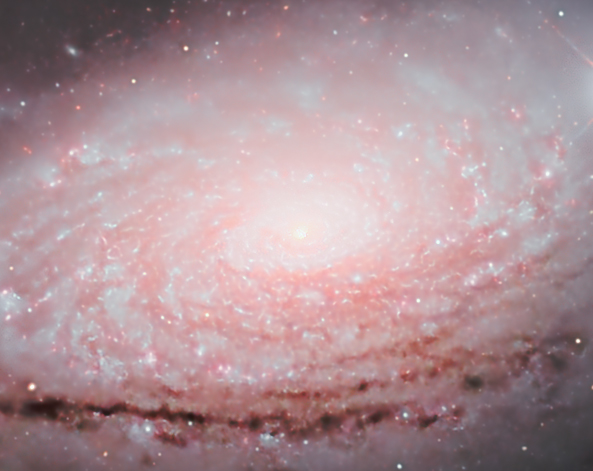
According to Thornley, 1996, when observed in the near infrared, a symmetric, two-arm structure is seen and each arm wraps 150° around the galaxy and extends out to 13,000 light-years (4,000 parsecs) from the nucleus; cfr. https://arxiv.org/abs/astro-ph/9607041.
According to Graham, 2008, the existence of a supermassive black hole (SMBH) at the nucleus is uncertain. If it’s true then its mass could be estimated as (8.5±1.9)×108 M☉, in few words around 850 million times the mass of our star the Sun; cfr.: https://arxiv.org/abs/0807.2549
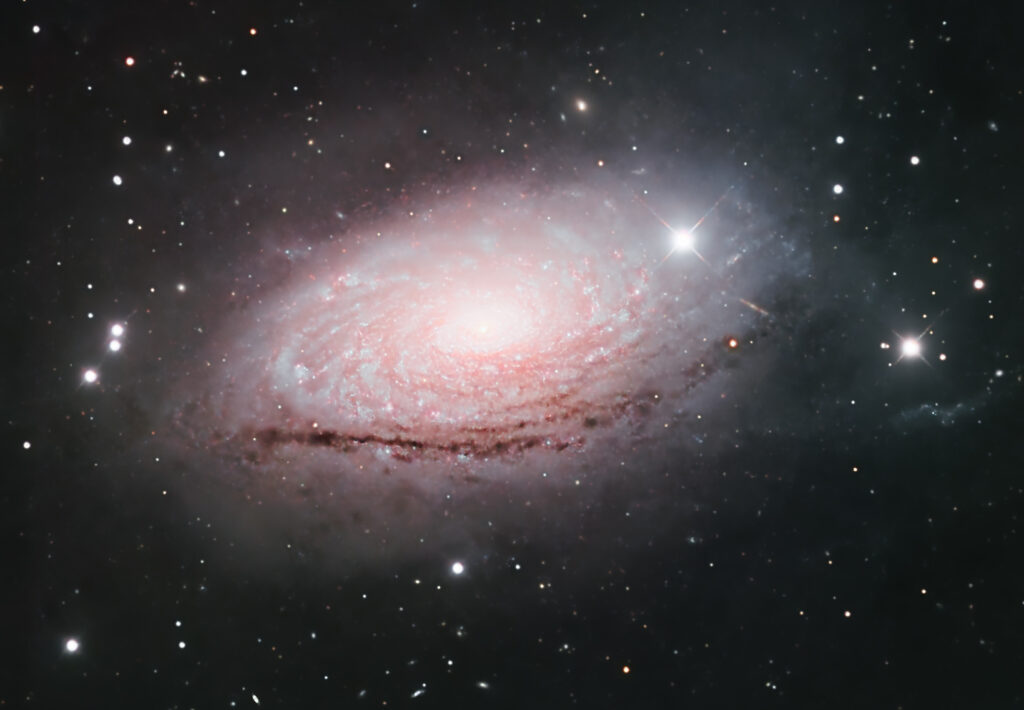
Tully, Courtois and Sorce researches focused on galaxy distances measured M63 at 29.300.000 light years, alias 8.99 megaparsec. Cfr.: https://arxiv.org/abs/1605.01765
In this work I use bundle observation from Telescopelive Spain 2 CCD Officina Stellare 700mm RC.
First, by PixInSight, Cosmetic Correction was required to better recalibrate subframes, especially removing vertical couple of lines. Then the same registration, integration, bg removing, spcc, deconvolution and denoising routine to generate LRGB masterframe, while in parallel, working on Luminance master for final Photoshop image reconstruction, with starless and stars levels blending – respectively in luminosity (L) and screen (Stars) mode.
Astrobin:
Framelist available here:
